
Tuskegee University is a private, historically black land-grant university in Tuskegee, Alabama. It was founded on July 4th in 1881 by the Alabama Legislature.

A normal school or normal college is an institution created to train teachers by educating them in the norms of pedagogy and curriculum. Many such schools have since been called teacher training colleges or teachers' colleges, but in Mexico, continue to be called normal schools, with student-teachers being known as normalistas. Many schools require a high school diploma for entry, and may be part of a comprehensive university. Normal schools in the United States, Canada, and Argentina trained teachers for primary schools, while in Europe, the equivalent colleges typically educated teachers for primary schools and later extended their curricula to also cover secondary schools.
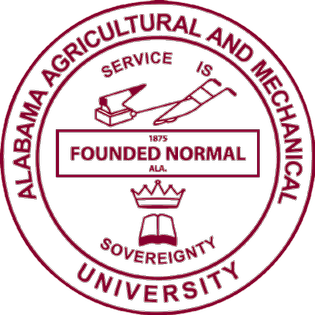
Alabama Agricultural and Mechanical University is a public historically black land-grant university in Normal, Huntsville, Alabama. Founded in 1875, it took its present name in 1969. It was one of about 180 "normal schools" founded by state governments in the 19th century to train teachers for the rapidly growing public common schools. It was one of 23 established to train African Americans to teach in segregated schools. Some closed but most steadily expanded their role and became state colleges in the early 20th century and state universities in the late 20th century. AAMU is a member-school of the Thurgood Marshall College Fund and is accredited by the Southern Association of Colleges and Schools. Alabama Agricultural and Mechanical University Historic District, also known as Normal Hill College Historic District, has 28 buildings and four structures listed in the United States National Register of Historic Places.

Storer College was a historically Black college in Harpers Ferry, West Virginia, that operated from 1867 to 1955. A national icon for Black Americans, in the town where the 'end of American slavery began', as Frederick Douglass famously put it, it was a unique institution whose focus changed several times. There is no one category of college into which it fits neatly. Sometimes white students studied alongside Black students, which at the time was prohibited by law at state-regulated schools in West Virginia and the other Southern states.

The Lincoln Normal School (1867–1970), originally Lincoln School and later reorganized as State Normal School and University for the Education of Colored Teachers and Students, was a historic African American school expanded to include a normal school in Marion, Alabama. Founded less than two years after the end of the Civil War, it is one of the oldest HBCUs in the United States.

Robert Robinson Taylor was an American architect and educator. Taylor was the first African-American student enrolled at the Massachusetts Institute of Technology (MIT), and the first accredited African-American architect when he graduated in 1892. He was an early and influential member of the Tuskegee Institute faculty.
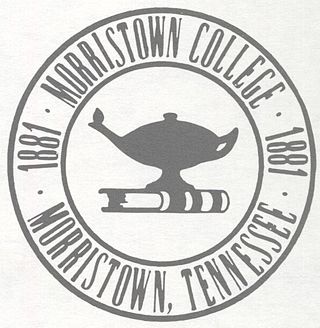
Morristown College was an African American higher education institution located in Morristown, the seat of Hamblen County, Tennessee. It was founded in 1881 by the national Freedman's Aid Society of the Methodist Episcopal Church. The school was renamed Knoxville College-Morristown Campus in 1989 and closed in 1994. Prior to the civil rights movement, the college held the distinction of being one of only two institutions in East Tennessee for African Americans, the other being Knoxville College, founded in 1875.

Lucy Craft Laney was an American educator who in 1883 founded the first school for black children in Augusta, Georgia. She was principal for 50 years of the Haines Institute for Industrial and Normal Education.
Rev. Don Speed Smith Goodloe, born in the Lowell community, near Paint Lick, Kentucky, was a black teacher who became a pioneer for racial integration in the Unitarian church. He was the first principal of the Maryland Normal and Industrial School at Bowie for the Training of Colored Youth, also known as Maryland State Normal School No. 3—which later became Bowie State University.
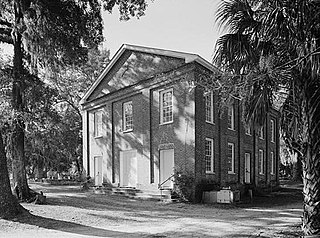
The Penn Center, formerly the Penn School, is an African-American cultural and educational center in the Corners Community on Saint Helena Island. Founded in 1862 by Quaker and Unitarian missionaries from Pennsylvania, it was the first school founded in the Southern United States specifically for the education of African-Americans. It provided critical educational facilities to Gullah slaves freed after plantation owners fled the island, and continues to fulfill an educational mission. Leigh Richmond Miner photographed students and activities at the school.
The North Dakota State Normal and Industrial School at Ellendale (1899–1971) was a distinctive state-supported institution that offered secondary and later postsecondary courses in academic and vocational skills to generations of young people, most of whom lived in southeastern North Dakota. Initially designated the state manual training school by North Dakota’s 1889 constitution, the school opened in September 1899, welcoming 150 students during its first semester of existence. It attracted a distinguished faculty with degrees from leading midwestern colleges; they taught courses that ranged from English composition, Latin and chemistry to dressmaking, nutrition, blacksmithing, photography and bookkeeping. Students made use of the school’s offerings based on their own needs and aspirations: its first president, Warren Hicks, claimed that the school “went where the crowd pushed,” meaning that its purpose was to meet community needs. A later president, R.M. Black, called it a “school for the people” and a “living symbol of democracy.”

The Snow Hill Normal and Industrial Institute, also known as the Colored Industrial and Literary Institute of Snow Hill, was a historic African American school in Snow Hill, Alabama. It was founded in 1893 by Dr. William James Edwards, a graduate of Tuskegee University, and began in a one-room log cabin. The school grew over time to include a campus of 27 buildings, a staff of 35, and over 400 students. The school was operated as a private school for African-American children until Dr. Edward's retirement in 1924, when it became a public school operated by the State of Alabama. The school closed in 1973, after the desegregation of the Wilcox County school system. Out of the original 27 buildings, only eight survive today. They range in architectural style from Queen Anne to Craftsman and include the founder's home, five teachers' cottages, and the library. The National Snow Hill Alumni Association and the local Snow Hill Institute supporters determined to save the remaining structures in 1980. In June 1980, Dr. Edwards' granddaughter and Snow Hill alumna Consuela Lee Moorehead reopened the school as the Springtree/Snow Hill Institute for the Performing Arts and ran after-school and summer programs for local students. The art institute continued to run until 2003 when Moorehead's declining health caused her to close down the school. The school was listed on the National Register of Historic Places on February 24, 1995.
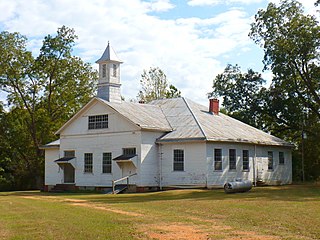
Prairie Mission, also known as the Prairie Mission School and Prairie Institute, was a historic African American school in the community of Prairie, Alabama. The school is the only survivor of the six original Presbyterian mission schools that once operated in Wilcox County. It was placed on the Alabama Register of Landmarks and Heritage on July 22, 1991 and subsequently on the National Register of Historic Places on October 29, 2001, due its significance to African American history.

The Wilcox Female Institute is a historic Greek Revival-style school building in Camden, Alabama. The two-story brick structure was built between 1845 and 1850 as a boarding school for girls. The school closed in 1910 and the building was then used by the Wilcox County school system for over 50 years. It was acquired by the Wilcox Historical Society in 1976. The group made it into their official headquarters. It was placed on the National Register of Historic Places on April 3, 1975.
Millers Ferry is an unincorporated community in Wilcox County, Alabama, United States. The Millers Ferry Lock and Dam is located near the community on the Alabama River.
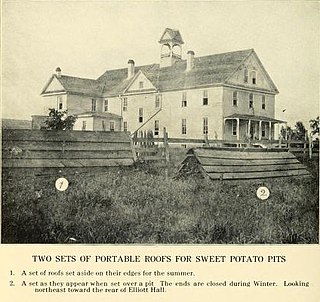
Oak Hill Industrial Academy was founded as a day school and later became a boarding school for Choctaw Freedmen. It existed from 1878 to 1936. It was located in the far southeastern corner of the Choctaw Nation in Indian Territory in what is now Oklahoma. The original location was in the southwest corner of Section 27 near the present-day Valliant, Oklahoma. But in 1902 it was rebuilt in the northeast quarter of section 29 near the western line of McCurtain County, Indian Territory. The school closed in 1936, and no evidence of it other than a historical marker remains.
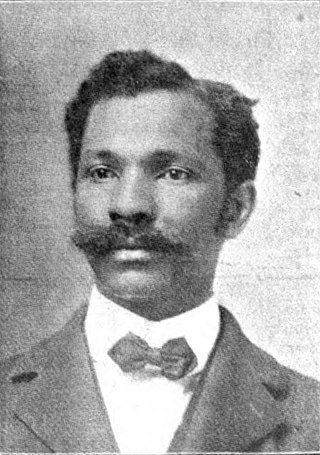
James Munroe Canty was an American educator, school administrator, and businessperson. Canty was an acting principal of the West Virginia Colored Institute in 1898 and is considered by West Virginia State as an acting president. Canty also served as the superintendent of Mechanical Industries for West Virginia Colored Institute from 1893 through 1914.
Luther College was a private black school in New Orleans, Louisiana, United States. It was established by the Evangelical Lutheran Synodical Conference of North America in 1903 as part of the conference's missionary work among African Americans in the Southern United States following the American Civil War. The school was founded the same year as Immanuel Lutheran College in Concord, North Carolina, and both schools had the same three departments: a secondary school, a normal school, and a seminary.
Haygood Seminary, also known as Haygood Academy, was a seminary near Washington, Arkansas, United States. It was established by the Colored Methodist Episcopal Church to train African Americans in Arkansas for a career in the clergy. It was one of the first such institutions established by the CME Church. In 1927, the school relocated to Jefferson County, Arkansas, where it operated as Arkansas-Haygood Industrial College before closing during World War II.
Camden Academy (1895–1970) was a private school for African Americans in Camden, Alabama, the county seat of Wilcox County, Alabama. It served elementary school students, secondary school students, and boarders.














